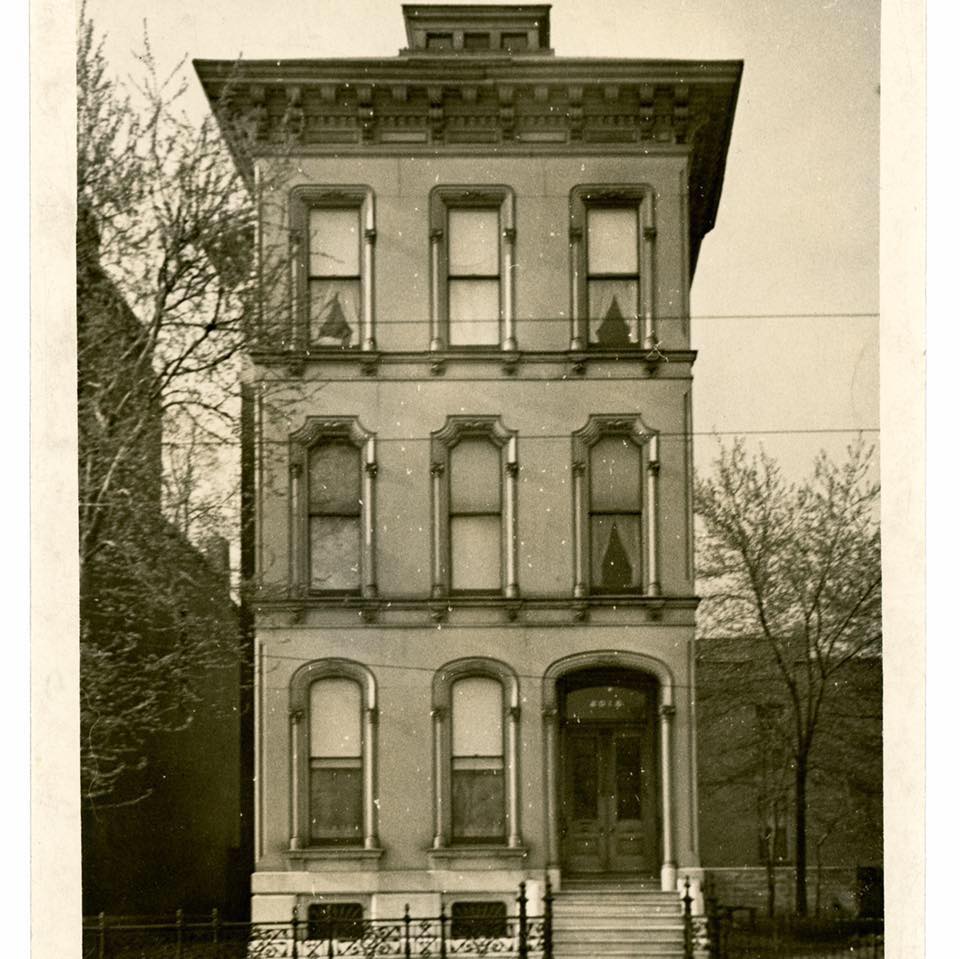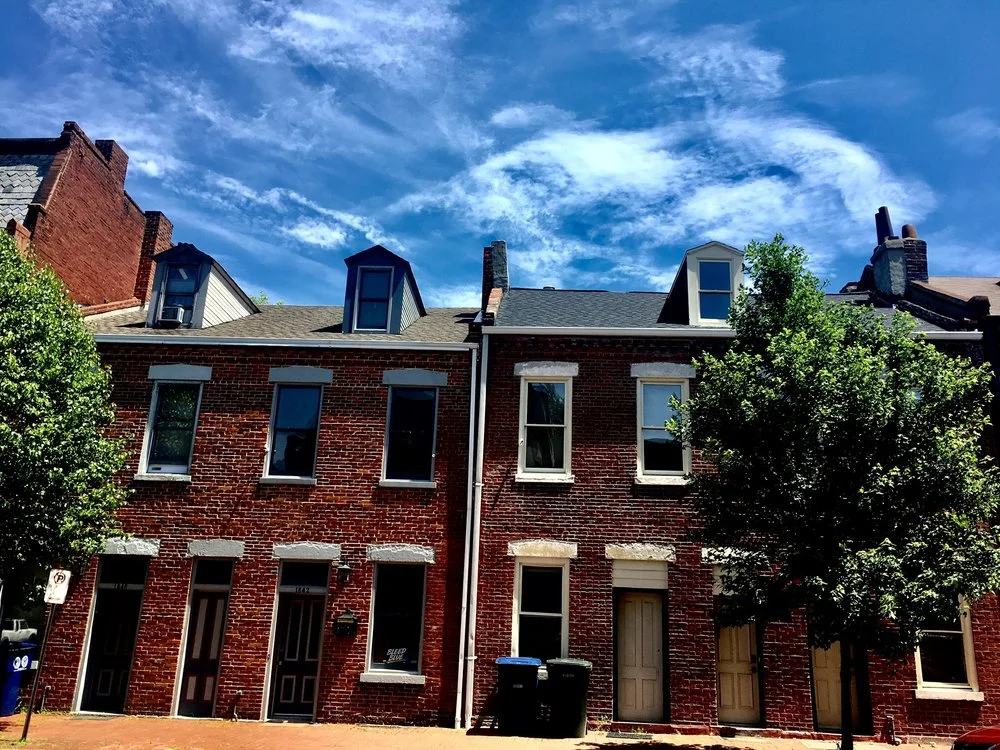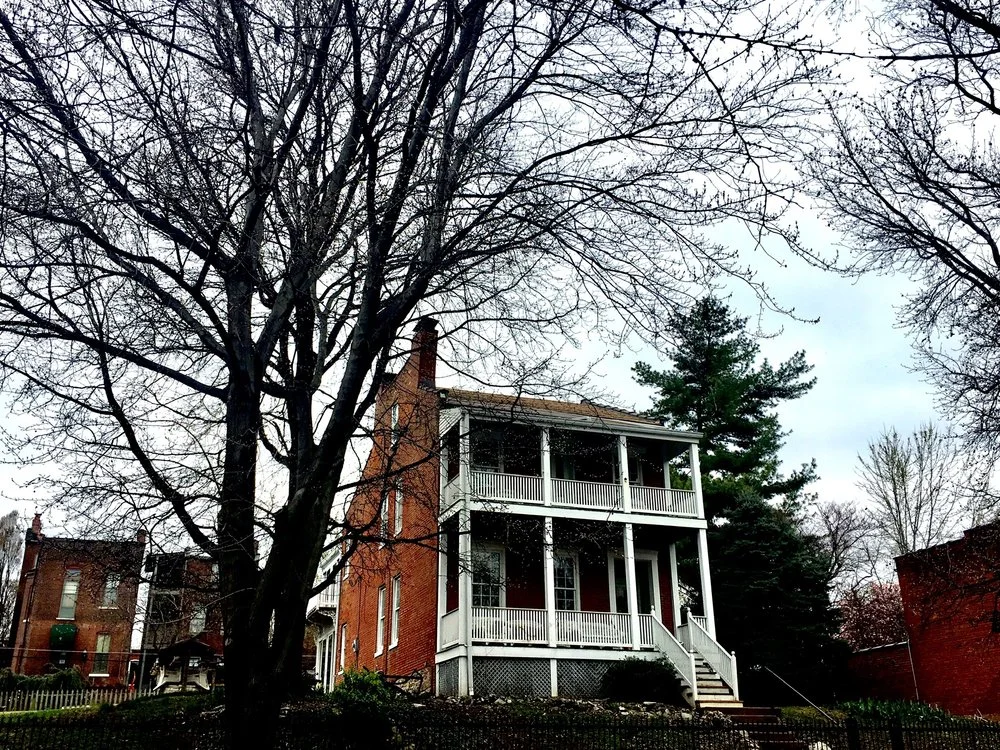Christian Brust Row Houses
1840-46 S. 10th Street
Built: September 25, 1844
Style: Greek Revival
Neighborhood: Soulard
City Block: 384
Former addresses: 151-57 Buel, 1904-10 Buel
On 1875 Compton and Dry Map: Yes
On 1883 Hopkins Atlas: Yes
Historical significance: On September 25, 1844, a number of lots along the corner of Buel and Emmet were sold by Julia C. Soulard to Christian Brust. Brust was living in a small frame building right on the corner, and in 1851, he was listed as operating a beer hall here by 1851. He had row houses constructed on the site by 1848, when people were first listed here. By 1857, Ferdinand Bischoff, a city engineer, was listed as living at 153 Buel, and on January 23, 1858, he purchased the building from Brust, who continued to live in the frame building until his death in 1876. Before Bischoff moved to 1842 S. 8th in 1868, he had rented out rooms in the row to African Americans, recently freed from enslavement. John Harris, a porter on the riverfront, was listed as a resident in 1866 at 151 Buel. It is well documented that German immigrants were Union sympathizers and abolitionists, which is why Soulard was one of the earliest neighborhoods where African Americans lived. From 1867-1884, the second half of the 1800 it is well documented block of Buel was the first half of the 1900 block. This changed when the street name was changed to S. 10th in 1884, or possibly a little earlier. In 1894, the frame house of Christian Brust was demolished and replaced by a larger Second Empire corner building. The building was used as multi family units historically, but has since been converted to four single family townhouses.
Architectural significance: These row houses were built sometime between 1844 and 1848, making them among the oldest extant examples of row houses in St. Louis. The buildings were constructed in the Greek Revival style, featuring pitched roofs, limestone lintels with small peaks at the top. The buildings originally had “mouse holes”, passageways through the middle of the building, which have since been covered by doors. City Block 384 is among the most intact city blocks from the mid 19th century, with all but three of its pre-Civil War structures remaining.
The row houses as of Mardi Gras 2024.
The area on the 1875 Compton and Dry Map
City Block 384 on the 1883 Hopkins Atlas
The area on the 1909 Sanborn Map
The listing of John Harris on the 1866 Edward’s’ City Directory.







